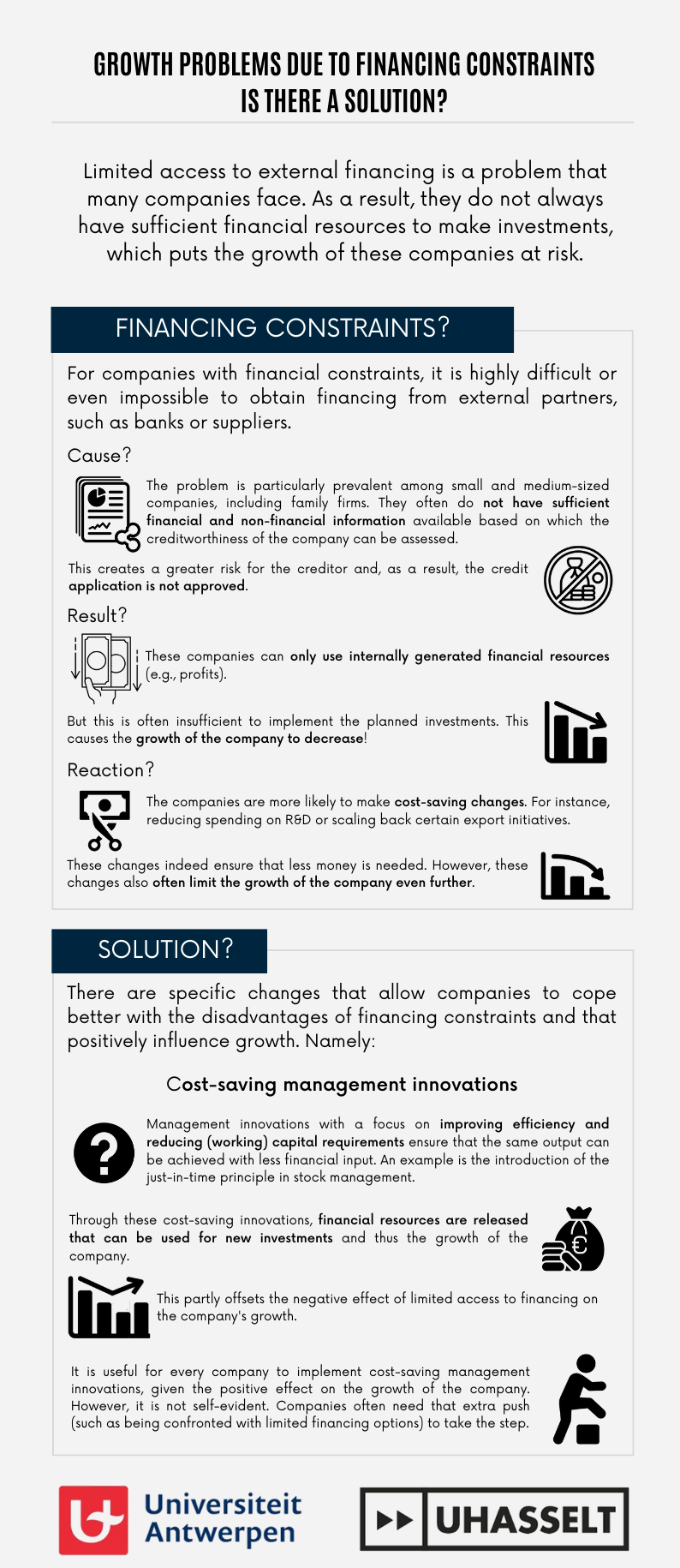Are management innovations a solution for growth problems due to financing constraints?
- Strategic Change

- May 9, 2023
- 2 min read
Limited access to external financing is a problem that many companies face. In this situation, it is highly difficult or even impossible for companies to obtain financing from external partners, such as banks or suppliers. These companies can therefore only use internally generated financial resources (e.g., profits), which means that the proposed investments can only be partially or not at all implemented. This puts the growth of these companies at risk.
The problem of limited access to external financing is particularly prevalent among small and medium-sized companies, including family firms. They often do not have sufficient financial and non-financial information available based on which the creditworthiness of the company can be assessed. This creates a greater risk for the creditor and, as a result, the credit application is not approved.
Given the difficulties faced by companies with limited access to external financing, these companies are more likely to make cost-saving changes. For instance, reducing spending on R&D or scaling back certain export initiatives. These changes indeed ensure that less money is needed, which means that the problem of limited access is less pronounced. However, these changes also often limit the growth of the company.
Nevertheless, research has shown that there are specific changes that make companies better at dealing with the disadvantages of limited financing options and that positively influence the growth of the company. More specifically, these changes are cost-saving management innovations: changes that provide new organizational processes and structures and, at the same time, also aim to reduce the need for capital in the company. Management innovations with a focus on improving efficiency and reducing (working) capital requirements ensure that the same output can be achieved with less financial input. An example is the introduction of the just-in-time principle in stock management.
The results show that the implementation of cost-saving management innovations occurs more often in companies with limited access to financing. Through these cost-saving innovations, financial resources are released that can be used for new investments and thus the growth of the company. This partly offsets the negative effect of limited access to financing on the company's growth. It is therefore important that companies facing funding constraints know that introducing these innovations can be a – partial – solution to their growth problems.
In any case, it is useful for every company to implement cost-saving management innovations, given the positive effect of these innovations on the growth of the company. However, the introduction of these management innovations is not self-evident. Companies often need that extra push to make these changes. The confrontation with limited financing options can therefore be seen as such a push.




Comments